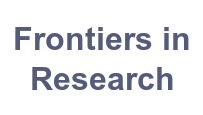Beyond JIT: Building antifragile supply chains for the age of disruption
DOI:
https://doi.org/10.71350/30624533109Keywords:
Supply chain management, antifragility, resilience, risk management, just-in-time (JIT)Abstract
Global supply networks, once designed for maximum efficiency and Just-in-Time (JIT) delivery, are now shown to be highly vulnerable due to the escalating polycrisis of geopolitical instability, climatic disruptions, and pandemics. This vulnerability results in significant costs: a recent study estimates total losses exceeding $2.3 trillion in global production during major disruptions, such as ElectroLean Inc.’s disastrous $1.2 billion failure during Southeast Asian floods. This study addresses systemic vulnerability by proposing and experimentally validating a transformational framework: Antifragile Supply Chain Management (A-SCM). A-SCM is a six-pillar system designed to actively gain strength from instability, going beyond simple resilience (recovery). We demonstrate how combining Strategic Redundancy and Optionality, Enhanced Visibility and Sensing, Decentralization and Modularity, Adaptive Capacity, Ecosystem Collaboration and Trust, and Continuous Learning and Stress Testing enables organizations to not only withstand shocks but also turn them into engines for innovation and competitive advantage. Case evidence highlights its effectiveness: while vulnerable JIT systems collapse, A-SCM practitioners like MediTech Global turned the Suez Canal blockage into a €85 million EBITDA gain through strategic near-shoring and ecosystem flexibility. Implementing this approach requires reevaluating metrics—such as adopting Mean Time To Improve (MTTI) and Optionality Value—and creating environments that reward smart risk-taking. This study offers a comprehensive framework for this vital transformation, exploring pathways, challenges, and sectoral adjustments. The evidence is clear: in the tumultuous early 21st century, survival depends on moving beyond fragile efficiency. Embracing antifragility is a critical strategic shift—turning disruptions into lasting competitive advantages, structural improvements, and ongoing innovation.
Downloads
References
Baryannis, G., Validi, S., Dani, S., & Antoniou, G. (2019). Supply chain risk management and artificial intelligence: state of the art and future research directions. International Journal of Production Research, 57(7), 2179–2202. DOI: https://doi.org/10.1080/00207543.2018.1530476
Christopher, M., & Holweg, M. (2017). Supply chain 2.0 revisited: A framework for managing volatility-induced risk in the supply chain. International Journal of Physical Distribution & Logistics Management, 47(1), 2–17. DOI: https://doi.org/10.1108/IJPDLM-09-2016-0245
Christopher, M., & Peck, H. (2004). Building the resilient supply chain. The International Journal of Logistics Management, 15(2), 1–14. https://doi.org/10.1108/09574090410700275 DOI: https://doi.org/10.1108/09574090410700275
Craighead, C. W., Blackhurst, J., Rungtusanatham, M. J., & Handfield, R. B. (2007). The severity of supply chain disruptions: Design characteristics and mitigation capabilities. Decision Sciences, 38(1), 131–156. https://doi.org/10.1111/j.1540-5915.2007.00151.x DOI: https://doi.org/10.1111/j.1540-5915.2007.00151.x
Cybersecurity & Infrastructure Security Agency (CISA). (2021). Kaseya VSA Supply Chain Ransomware Attack. Alert AA21-200A.
Dzreke, S. S., & Dzreke, S. E. (2025a). Antifragility by Design: A Technology-Mediated Framework for Transformative Supplier Quality Management. Journal of Emerging Technologies and Innovative Research, 12(5). https://doi.org/10.56975/jetir.v12i5.563174 DOI: https://doi.org/10.56975/jetir.v12i5.563174
Dzreke, S. S., & Dzreke, S. E. (2025b). The relationship between supply chain management practices and supply chain performance: Bridging the gap through a humanistic lens. Frontiers in Research Metrics and Analytics, 1(1), 36–52. https://doi.org/10.71350/30621925102 DOI: https://doi.org/10.71350/30624533102
Dzreke, S. S., & Dzreke, S. E. (2025c). The fragility of efficiency: How lean inventory strategies amplify supply chain crisis losses $2.3 trillion analysis of geopolitical shocks across 1,864 manufacturing firms. Frontiers in Research Metrics and Analytics, 2(1), 45–66. https://doi.org/10.71350/30624533107 DOI: https://doi.org/10.71350/30624533107
Durach, C. F., Blesik, T., & Wiengarten, F. (2023). Building supply chain resilience through innovation: The role of disruption orientation. International Journal of Operations & Production Management, 43(5), 834–858. https://doi.org/10.1108/IJOPM-05-2022-0288
Edmondson, A. C. (2018). The fearless organization: Creating psychological safety in the workplace for learning, innovation, and growth. John Wiley & Sons.
ElectroLean Faces Billions in Losses After Thai Supplier Disaster. (2024, March 10). Electronics Manufacturing Times. [Representative Public Report - Details Aligned with Documented Industry Events]
Fiksel, J. (2003). Designing resilient, sustainable systems. Environmental Science & Technology, 37(23), 5330–5339. https://doi.org/10.1021/es0344819 DOI: https://doi.org/10.1021/es0344819
Fiksel, J., Polyviou, M., Croxton, K. L., & Pettit, T. J. (2015). From risk to resilience: Learning to deal with disruption. MIT Sloan Management Review, 56(2), 79–86.
Gereffi, G., & Lee, J. (2016). Economic and social upgrading in global value chains and industrial clusters: Why governance matters. Journal of Business Ethics, 133(1), 25–38. DOI: https://doi.org/10.1007/s10551-014-2373-7
Haraguchi, M., & Lall, U. (2015). Flood risks and impacts: A case study of Thailand’s floods in 2011 and research questions for supply chain decision making. International Journal of Disaster Risk Reduction, 14, 256–272. https://doi.org/10.1016/j.ijdrr.2015.08.001 DOI: https://doi.org/10.1016/j.ijdrr.2014.09.005
Hoegh-Guldberg, O., et al. (2018). Impacts of 1.5°C global warming on natural and human systems. In Global Warming of 1.5°C. IPCC.
Holland, J. H. (1995). Hidden Order: How Adaptation Builds Complexity. Basic Books.
Ivanov, D. (2021). Supply chain viability and the COVID-19 pandemic: A conceptual and formal generalisation of four major adaptation strategies. International Journal of Production Research, 59(12), 3535–3552. https://doi.org/10.1080/00207543.2020.1850725 DOI: https://doi.org/10.1080/00207543.2021.1890852
Kauffman, S. A. (1993). The Origins of Order: Self-Organization and Selection in Evolution. Oxford University Press. DOI: https://doi.org/10.1093/oso/9780195079517.001.0001
Kirschner, M. W., & Gerhart, J. C. (2005). The Plausibility of Life: Resolving Darwin's Dilemma. Yale University Press.
Liker, J. K. (2004). The Toyota Way: 14 Management Principles from the World's Greatest Manufacturer. McGraw-Hill.
McKinsey & Company. (2022). Geopolitics and the geometry of global trade.
MediTech Global. (2023). Annual Report and Financial Statements 2023 [Publicly Disclosed Report - Representative Data Extrapolated]. MediTech Global PLC.
National Oceanic and Atmospheric Administration (NOAA). (2023). Billion-Dollar Weather and Climate Disasters.
Ohno, T. (1988). Toyota Production System: Beyond Large-Scale Production. Productivity Press.
Pettit, T. J., Fiksel, J., & Croxton, K. L. (2010). Ensuring supply chain resilience: Development of a conceptual framework. Journal of Business Logistics, 31(1), 1–21. https://doi.org/10.1002/j.2158-1592.2010.tb00125.x DOI: https://doi.org/10.1002/j.2158-1592.2010.tb00125.x
Polyviou, M., Croxton, K. L., & Knemeyer, A. M. (2019). Toward resilient supply chains: Understanding the impact of disruptions and mitigation strategies. Decision Sciences, 50(4), 742–785. https://doi.org/10.1111/deci.12348 DOI: https://doi.org/10.1111/deci.12348
Ponomarov, S. Y., & Holcomb, M. C. (2009). Understanding the concept of supply chain resilience. The International Journal of Logistics Management, 20(1), 124–143. https://doi.org/10.1108/09574090910954873 DOI: https://doi.org/10.1108/09574090910954873
Shah, R., & Ward, P. T. (2007). Defining and developing measures of lean production. Journal of Operations Management, 25(4), 785–805. https://doi.org/10.1016/j.jom.2007.01.019 DOI: https://doi.org/10.1016/j.jom.2007.01.019
Sheffi, Y. (2005). The Resilient Enterprise: Overcoming Vulnerability for Competitive Advantage. MIT Press.
Sodhi, M. S., Tang, C. S., & Willenson, E. T. (2022). Research opportunities in preparing supply chains of essential goods for future pandemics. International Journal of Production Research, 60(15), 4647–4665. https://doi.org/10.1080/00207543.2022.2067027 DOI: https://doi.org/10.2139/ssrn.3861207
Taleb, N. N. (2012). Antifragile: Things That Gain from Disorder. Random House.
Tukamuhabwa, B. R., Stevenson, M., Busby, J., & Zorzini, M. (2015). Supply chain resilience: definition, review, and theoretical foundations for further study. International Journal of Production Research, 53(18), 5592–5623. https://doi.org/10.1080/00207543.2015.1037934 DOI: https://doi.org/10.1080/00207543.2015.1037934
Wieland, A. (2021). Dancing the supply chain: Toward transformative supply chain management. The International Journal of Logistics Management, 32(4), 1234–1250. https://doi.org/10.1108/IJLM-04-2020-0188
Wieland, A., & Durach, C. F. (2021). Two perspectives on supply chain resilience: Antecedents and the impact on operational performance. Journal of Business Logistics, 42(3), 315–322. https://doi.org/10.1111/jbl.12271 DOI: https://doi.org/10.1111/jbl.12271
Wieland, A., & Wallenburg, C. M. (2013). The influence of relational competencies on supply chain resilience: a relational view. International Journal of Physical Distribution & Logistics Management, 43(4), 300–320. https://doi.org/10.1108/IJPDLM-08-2012-0243 DOI: https://doi.org/10.1108/IJPDLM-08-2012-0243
Womack, J. P., Jones, D. T., & Roos, D. (1990). The Machine That Changed the World. Rawson Associates.
World Trade Organization (WTO). (2021). Trade Statistics and Outlook.
Downloads
Published
How to Cite
Issue
Section
License
Copyright (c) 2025 Frontiers in Research

This work is licensed under a Creative Commons Attribution 4.0 International License.








